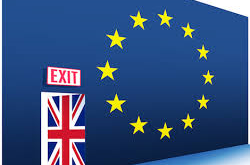Sterling has neared the 50% retracement of the 11.5 cent decline since mid-December. It is found near $1.4660. After easing ahead of the BOE announcement, sterling was sold to $1.4530 on the initial headlines that showed the BOE was cutting its growth, inflation, and wage forecasts. However, the short-sterling futures had already largely discounted the rates being low for longer, and UK debt instruments also sold off, and after the initial flurry, sterling stabilized and recovered...
Read More »Dollar Retreat Extends
The US dollar remains under broad pressure after yesterday's sharp decline. Neither dovish comments by ECB President Draghi, nor the Reserve Bank of New Zealand have managed to reverse the gains of their respective currencies. Similar, the rise in US yields and firm equities have failed to push the yen lower. Investors and policymakers are trying to link news developments to the price action, but it seems to be a bit of a stretch. It is true that NY Fed President Dudley, who had...
Read More »3.4. More Thoughts on Negative Rates
The Bank of Japan surprised investors by introducing negative rates last week. Leave aside the fact that the negative rates do not go into effect for more than another week, and even when in effect, will apply to a relatively small amount of deposits at the central bank. The important point is that it is another central bank to introduce negative rates. Moreover, the yields of Japanese bonds through eight-year maturities have turned negative. In comparison, German yields are...
Read More »Dollar Edges Lower, Markets Trying to Stabilize
The US dollar is sporting a softer profile today as the global capital markets are trying to stabilize. Oil prices have steadied, with WTI back above $30. Bond markets are narrowly mixed though the 10-year US Treasury is steady near 1.85%. Asian and European equities followed US markets lower, but American equities have stabilized, and ahead of the ADP employment estimate and the ISM for non-manufacturing, S&P 500 is set to open slightly higher. The dollar continued to shed the...
Read More »Great Graphic: Falling Equities and US Treasuries Blunt Impact of BOJ’s Surprise
The yen is the strongest currency today. Many are still referring to it as a safe haven. However, this strikes us as a misuse of the concept. Investors are not flocking to the yen to find quiet place to ride out the storm. Rather the yen's strength is a reflection of the turmoil. As we have explained the yen and euro have been used to finance the purchases of other assets. As those assets are liquidated, the funding currency is bought back. The dollar, euro and yen are the most...
Read More »Cameron vs Brexit: Mission Accomplished
The EC draft proposals in response to the UK’s demands have been enthusiastically embraced by Prime Minister Cameron. The wires quote Cameron as saying "I would opt in to EU membership on these good terms." The proposals presented by European Council President Tusk are weak on details that are still to be decided, though Cameron quickly seized upon them to claim: I have delivered commitments in my election manifesto." It has yet to be seen if it is sufficient to convince several of...
Read More »Familiar Patterns Return to Capital Markets
The decline in oil and equities are lifting European bonds and Treasuries. The US dollar is firmer against most major and emerging market currencies. We never put much stock in last week's seemingly euphoric speculation of a deal between Russia and OPEC to support oil prices. As the speculation is unwound, anticipation of another large US inventory build, and poor corporate earnings from energy sector are also taking a toll. BP posted a 91% decline in Q4 earnings. Yesterday, S&P...
Read More »3.3. FAQ: The Why and What For of BOJ’s Negative Interest Rates
The Bank of Japan surprised investors last week by introducing negative interest rates. At the World Economic Forum in Davos a couple weeks ago, BOJ Governor Kuroda appeared to deny that such a move was under consideration. The market's focus, like ours, was on the pace by which it was expanding its balance sheet (JPY80 trillion a year). The FAQ format may be the most effective way to explain what the BOJ did, why and the implications for investors. What did the Bank of Japan do? ...
Read More »3.3. FAQ: The Why and What For of BOJ’s Negative Interest Rates
The Bank of Japan surprised investors last week by introducing negative interest rates. At the World Economic Forum in Davos a couple weeks ago, BOJ Governor Kuroda appeared to deny that such a move was under consideration. The market's focus, like ours, was on the pace by which it was expanding its balance sheet (JPY80 trillion a year). The FAQ format may be the most effective way to explain what the BOJ did, why and the implications for investors. What did the Bank of Japan do? ...
Read More »Emerging Market Preview: Week Ahead
As we suspected, the current EM bounce still has some legs. The BOJ’s surprise easing helped EM and risk end on last week on a strong note, and we expect that to carry over into this week. Within EM, we will start to see the first readings for January. The biggest risk perhaps is the jobs report on Friday. Soft US data has helped push out Fed tightening expectations, but a strong reading here could put it back on the radar screen. Brazil reports December trade data on Monday. ...
Read More » Swiss Economicblogs.org
Swiss Economicblogs.org









